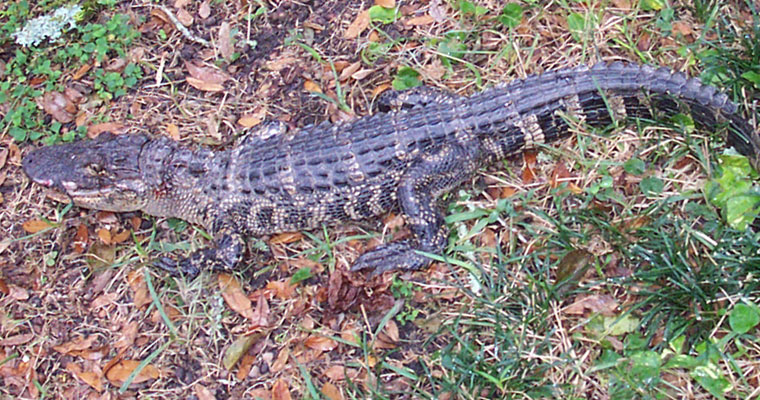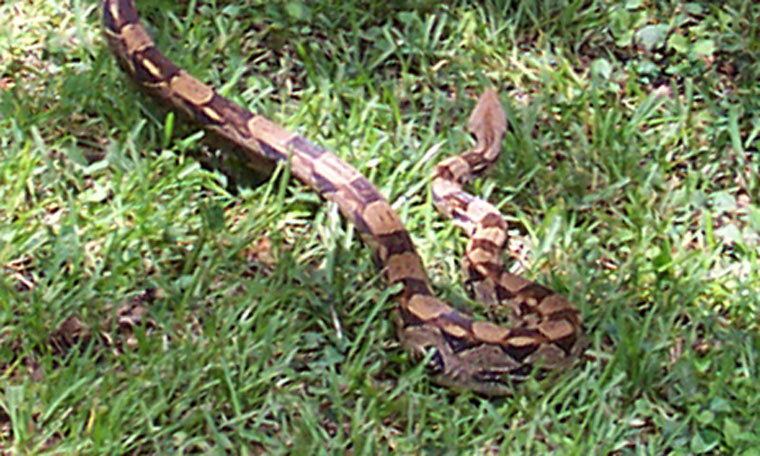-
info@aaanimalcontrol.com
Call us for help in your town
Humane Wildlife Education
Exotic reptile species that live in the wild of Florida
Need wildlife removal in your hometown? We service over 500 USA locations! Click here to hire us in your town and check prices - updated for year 2020.
Florida is the place where millions of older Americans have moved looking to find a warm climate where they can enjoy above average temperatures and beautiful scenes year-round. Florida not only offers an incredible climate, but great vacation destinations, and a life of luxury that makes it the ideal place to spend the golden years of your life.

Older Americans are not the only ones who see Florida has a great destination. There are plenty of exotic reptiles that you can find in the state as well. Because of the various ecosystems that are available, including swamplands and beach areas, reptiles find this to be a great location because of the warm temperatures, abundance of vegetation, and variety of species of prey that are at their disposal. If you are wondering about some of the more exotic reptile species that live in the wild the Florida, here are some of the more interesting ones.
Pythons and anacondas - any discussion of exotic reptiles in Florida has to begin with these rather ominous snakes. Over the last decades, pythons and anacondas have found their way into the sunshine state, often through purchases by individuals who soon find that the snakes are too much for them to handle, thus releasing them into the wild. These are not only very dangerous snakes, quite deadly ones. They are extremely aggressive and will attack virtually any animal that they come in contact with, including people. Because of their size, they are often able to successfully attack people, especially children, and so coming in contact with one of these reptiles is often life-threatening.
Frogs and Lizards - there are also several different kinds of lizards and frogs that have very small bodies that are found in Florida. The Cuban tree frog is one such example, which was first discovered off the island of Cuba and now finds itself successfully inhabiting Florida. There are also several different kinds of lizards, including the brown anole, the northern curly tail lizard, and the Mediterranean gecko. All of these, with the exception of the brown anole, started in other areas but have now made their way into Florida. Most of these species have made their way to Florida by hitching a ride on cargo, but do not pose a health risk to most human beings. They are quite content seeking after insects.
However, this is not true of the larger size lizards and snakes that have been introduced to the area through the pet trade. Snakes such as the Burmese python have already been mentioned, but there are a couple of different lizards that are becoming commonplace in the state. This includes the black spiny tailed iguana and the Argentine black-and-white tegu. Both of these can grow to be quite large in size, and are extremely aggressive. They will attack human beings and can inflict severe injury should they bite or scratch a person.
These kinds of animals are not often found in large metropolitan places but you will find them near swamps and Everglades areas.
Exotic Reptile Species That Live in the Wild of Florida
Need wildlife removal in your hometown? We service over 500 USA locations! Click here to hire us in your town and check prices- updated for year 2020.
Florida is the home of non-native species, with snakes, alligators, and even the infamous anaconda being found in the Everglades. Most of these species get there as a result of the exotic pet trade, something that has long since provide very detrimental for the long-standing eco-system. There are new predators on the prowl, and they're doing plenty of damage along the way.

South Florida is hot and muggy, and there's plenty of water around too. It's basically a subtropical climate. That's exactly what these animals are used to, so once they have been released into the wild, they survive. In fact, they don't just survive, they thrive, and this can have massive repercussions on the native animals of that territory.
It has been reported that non-native species of Florida cause over $120 BILLION of damage each year. These are animals that were once kept as pets. Snakes, for example, that had managed to escape from their enclosures. The Burmese python is a classic example of this, and the introduction of this beast of a snake — one of the top five largest snakes in the world — has had devastating effects on the wildlife around it. Other snakes, snakes that are actually native to Florida, are having to compete for food all of a sudden, because there is basically a new King of the Food Chain in town. The wood stork and Key Largo wood rat, for example, are animals already on the endangered list, and Burmese pythons are snapping up (quite literally) the few numbers that are left. If the invasive species are left to do this, we would lose yet another animal species. Once again, that extinction is down to human intervention or interference. In this case, the exotic pet trade.
Other pets, of course, are deliberately and purposefully released into the wild by negligent and foolish owners who realize that they are a lot more hassle to take care of than first initially thought. We're sure they wouldn't do this if they learned of the long-term implications involved. It also reinforces how careful an owner you must be if you are the owner of an exotic animal. It is YOUR responsibility to keep that animal safe, and also to keep other animals and people safe from that animal too.
Green anacondas have been spotted on a number of occasions in the Everglades of Florida although it is believed that these are one-off escape events. The South American beast is one of the biggest snakes in the world, again, and despite its size, is a great hider, making it all the more difficult to track when trying to count how many there are.
There's not just one anaconda to worry about either. The yellow anaconda might be smaller in size but still packs an intimidating punch and knocks out half the wildlife around it. Just like their larger green cousins, only a few of these yellow giants have been spotted in Florida and it is believed that their existence there could be down to one-off events.
Believe it or not, the Nile crocodile has even been found a couple of times, which is a very frightening event. These large reptiles are actually man-hunters where they originate from, and they're so dangerous that officials within the state of Florida have been given special permission to shoot and destroy the creatures on sight. It is believed that these creatures first managed to escape into the wild by way of escaping a farm or breeding program facility.
The African python is another non-native snake that has been introduced to Florida, and you can add the black and white tegu to the mix, a lizard that can grow to over five feet in length, and also reticulated pythons. Add boa constrictors to the list, as well as Nile monitor lizards. In short, we've started our very own new non-native species program out there, and a whole bunch of other animals are suffering as a direct result. As are a few homeowners, for that matter.
If you are an owner of an exotic pet species, it's time to check the enclosures to make sure your prized possessions cannot escape. If you are thinking of getting an exotic animal for a pet, make sure you do thorough research before bringing it into your home. You'll often find that these “low-maintenance” pets are much higher-maintenance than you had been told or led to believe. If you are considering releasing a wild animal back into the wild, native or non-native, think again. There are even legalities and eco/health risks associated with releasing native creatures back into the wild again. There's definitely going to be a problem ahead when the animal wasn't meant to be there in the first place.
For more information, you may want to click on one of these guides that I wrote:
How To Guide: Who should I hire? - What questions to ask, to look for, who NOT to hire.
How To Guide: do it yourself! - Advice on saving money by doing wildlife removal yourself.
Guide: How much does wildlife removal cost? - Analysis of wildlife control prices.
Animals in the attic - read about the common species.
Noises in the attic - how to identify critters by their sounds.


















